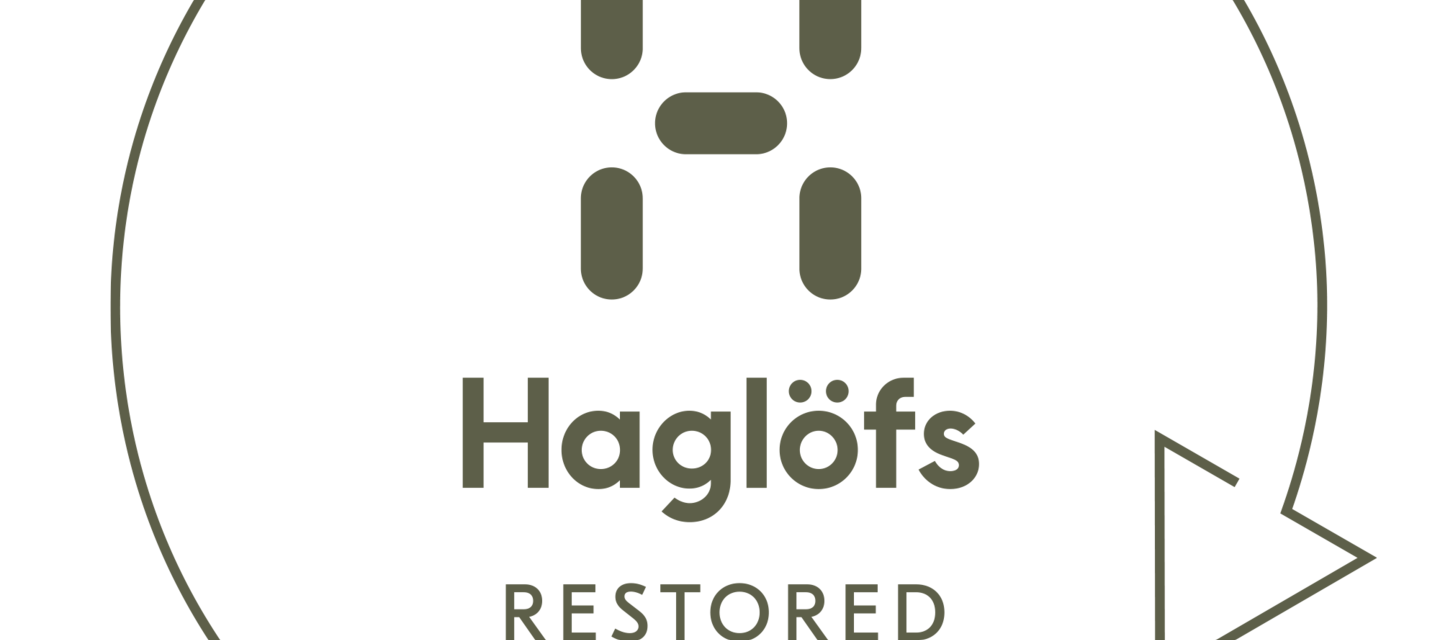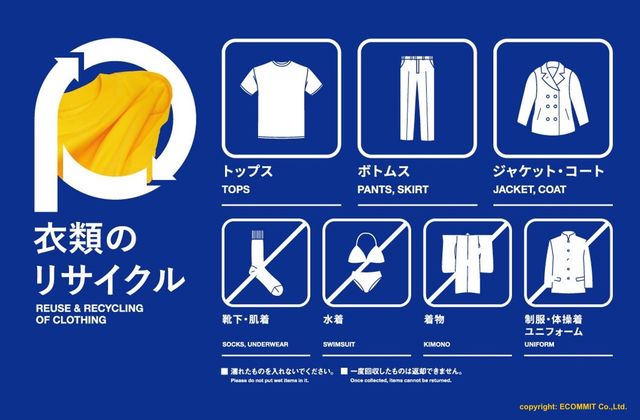Fashion, clothing and textiles
What is it?
Haglöfs Restored is a recently launched initiative that sells restored and repaired second-hand outdoor gears from Haglöfs. It is aimed at extending the lifetime of products and reducing the environmental impact. This initiative is a joint partnership with The Renewal Workshop, a provider of circular solutions for apparel and textiles (Haglöfs Restored, 2021a).
Why is this important?
The fashion industry has experienced significant growth over the past decades. Clothing production doubled between 2000 and 2014, with the industry valued at around $2.4 trillion in 2016 (Remy et al., 2016; UNEP, 2019). However, it loses about $500 billion of value every year due to the lack of recycling and clothes that are thrown into landfills before ever being sold (UNEP, 2019). It accounts for 4% of waste generated each year, of which 60% of materials are made out of plastics (Global Fashion Agenda, 2018; UNEP, 2019). Furthermore, the fashion industry is a heavy emitter, causing 10% of humanity’s carbon emissions (McFall-Johnsen, 2020). If the industry continues to grow on its current trajectory, its share of the global carbon budget could jump to 26% by 2050 (Ellen MacArthur Foundation, 2017). The fashion industry is also the second-largest consumer of water worldwide (McFall-Johnsen, 2020). It is reported that 20,000 litres of water are needed to produce one kilogram of cotton (Edge, 2021).
Main resource strategy: Slowing the loop by extending the lifetime of products through supported services of restore and repair; resale of restored products.
Other resource strategies: Narrowing the loop through the use of use lower impact materials such as recycled fibres, production powered by renewable energy (Haglöfs, 2021a); Closing the loop with recycling.
Business model aspects:
- Value Proposition: Haglöfs aims to have sustainability at its core. The company’s value proposition is to sell durable outdoor gear that is long-lasting, with a reduced carbon footprint and a positive impact on the community. Haglöfs Restored promotes more circular and sustainable consumption through the resale of the repaired and restored items from Haglöfs.
- Value Creation & Delivery: Haglöfs Restored offers customers the opportunity to purchase repaired Haglöfs products at a discounted price, thereby extending the lifespan of their products.
- Value Capture: Second-hand Haglöfs items that range from €30 (original price €45) to €390 (original price €600) (Haglöfs Restored, 2021a).
Strategies for degrowth/ sufficiency (based on sufficiency strategies from Niessen & Bocken, 2021):
Awareness-raising/ Question consumption: For five years in a row, Haglöfs has been running the Green Friday initiative to push back against the excessive consumption driven by Black Friday sales. For Green Friday 2020, Haglöfs closed down all the Haglöfs brand stores and as well as its global webstore to prelaunch the Haglöfs Restored initiative as a way to promote a more responsible way of shopping (Haglöfs, 2021a).
Support for repair: Haglöfs Restored provides care and repair guides for its customers (Haglöfs Restored, 2021b). Original Haglöfs products qualify for a lifetime warranty (Haglöfs, 2021b).
Resale: In order to support more responsible consumption, the brand offers second-hand resales through Haglöfs Restored (Haglöfs Restored, 2021a).
Business model experimentation practices:
On Friday, November 27th, 2020, Haglöfs pre-launched Haglöfs Restored as a part of its Green Friday initiative to push back against Black Friday in the form of a pop-up store (Haglöfs, 2021a). In October 2021, this was then launched as a permanent online offering.
Sustainability outcomes:
Currently, there is no data on the sustainability impact of Haglöfs Restored. However, Haglöfs’ partner, The Renewal Workshop, had reported a cumulative of 284,799 pounds of textile waste diverted from landfills across all its clothing renewal initiatives (The Renewal Workshop, 2020).
Sources:
Edge (2021). Fashion Industry Waste Statistics. Edge. Accessed on 22 October 2021 at: https://edgexpo.com/fashion-industry-waste-statistics/
Ellen MacArthur Foundation (2017). A new textiles economy: Redesigning fashion’s future. Accessed on 21 October 2021 at: https://ellenmacarthurfoundation.org/a-new-textiles-economy
Global Fashion Agenda (2018) Pulse of the fashion industry 2018 report. Accessed 22 October 2021 at: https://www.globalfashionagenda.com/publications-and-policy/pulse-of-the-industry/
Haglöfs (2021a). Sustainability report. Accessed on 21 October 2021 at: https://www.haglofs.com/on/demandware.static/-/Sites-haglofs-eu-Library/default/sustainability-report/Haglofs_Sustainability_Report_2020.pdf
Haglöfs (2021b). Guaranteed, By Nature. Accessed on 10 November 2021 at: https://www.haglofs.com/gb/en-gb/warranty/
Haglöfs Restored (2021a). Haglöfs Restored. Accessed on 21 October 2021 at: https://haglofsrestored.com/
Haglöfs Restored (2021b). How to care for your gear. Accessed on 21 October 2021 at: https://haglofsrestored.com/pages/care-guide
McFall-Johnsen, M. (2020). These facts show how unsustainable the fashion industry is. World Economic Forum. Accessed 21 October 2021 at: https://www.weforum.org/agenda/2020/01/fashion-industry-carbon-unsustainable-environment-pollution/
Niessen, L., & Bocken, N. M. (2021). How can businesses drive sufficiency? The business for sufficiency framework. Sustainable Production and Consumption, 28, 1090-1103. https://doi.org/10.1016/j.spc.2021.07.030
Remy, N., Speelman, E., & Swartz, S. (2016). Style that’s sustainable: A new fast-fashion formula. Accessed 21 October 2021 at: https://www.mckinsey.com/business-functions/sustainability-and-resource-productivity/our-insights/style-thats-sustainable-a-new-fast-fashion-formula.
The Renewal Workshop (2020). Leading Circular Report. Accessed on 10 November at: https://renewalworkshop.com/pages/leadingcircular
UNEP (2019). UN alliance for sustainable fashion addresses damage of ‘fast fashion’. UNEP. Accessed on 21 October 2021 at: https://www.unep.org/news-and-stories/press-release/un-alliance-sustainable-fashion-addresses-damage-fast-fashion
***
About project Circular X
Project Circular X is about ‘Experimentation with Circular Service Business Models’. It is an ambitious research project funded by the European Research Council (ERC) which supports top researchers from anywhere in the world. Project CIRCULAR X runs from 2020-2025. The project is led by Principal Investigator (PI) Prof Dr Nancy Bocken, who is joined by a multidisciplinary team of researchers at Maastricht Sustainability Institute (MSI), Maastricht School of Business and Economics, Maastricht University. The project cooperates with businesses who want to innovate towards the circular economy.
Project Circular X addresses a new and urgent issue: experimentation with circular service business models (CSBMs). Examples of such new business models include companies shifting from selling products to selling services and introducing lifelong warrantees to extend product lifetimes. However, CSBMs are far from mainstream and research focused on experimentation is little understood. The research aims to conduct interdisciplinary research with 4 objectives:
- Advancing understanding of CSBMs; their emergence and impacts
- Advancing knowledge on CSBM experimentation
- Developing CSBM experimentation tools
- Designing and deploying CSBM experimentation labs
Funding source
This project has received funding from the European Research Council (ERC) under the European Union’s Horizon 2020 research and innovation programme, grant agreement No. 850159.
Using of this information
When you refer to this case, please use the following source:
Circular X. (2021) Case study - Haglöfs Restored & restored outdoor gears. Accessed from www.circularx.eu



